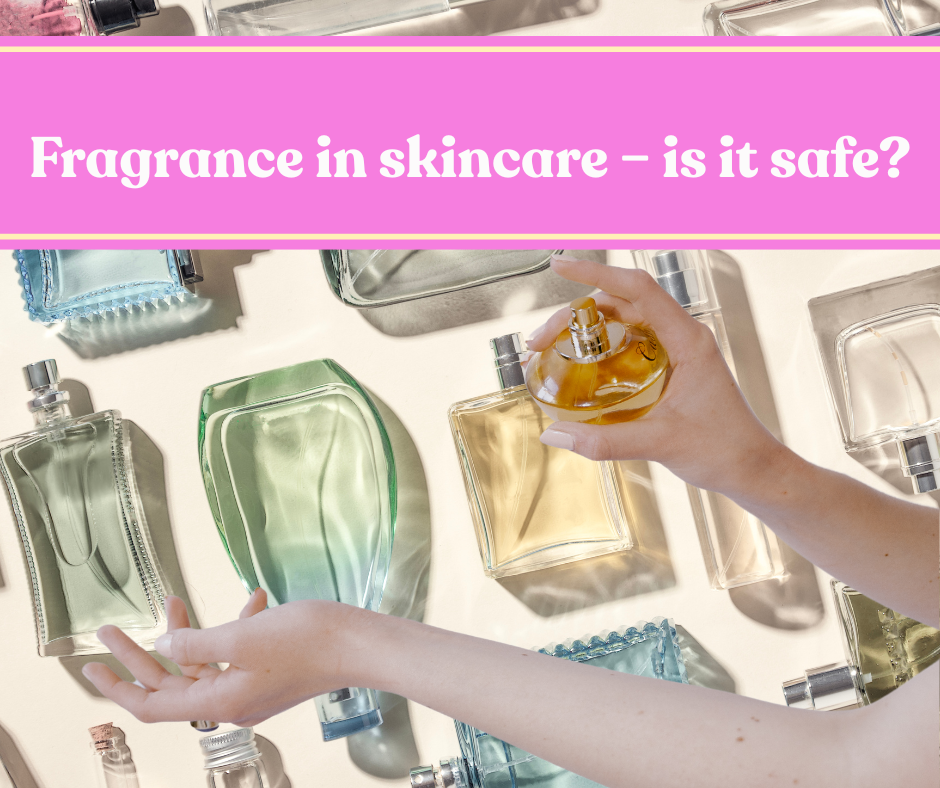
The Truth About Fragrance in Skincare: Always check the label!
Fragrance in skincare products is something most people don’t think twice about—until irritation, sensitivity, or deeper health concerns arise. Whether you’re choosing a face cream for yourself or a gentle wash for your baby, understanding fragrance is essential.
This blog will explore the role of fragrance in skincare, how common it is, the different types available, and what effects it can have on the human body—especially on our most vulnerable population: young children and babies.
1. How Common Is Fragrance in Skincare?
Fragrance is one of the most commonly added ingredients in cosmetic and skincare products. It’s estimated that over 60–80% of commercial skincare and cosmetic products contain fragrance—either as "fragrance/parfum" or through naturally aromatic ingredients like essential oils.
Even products marketed as "unscented" can include masking fragrances to neutralize the smell of other ingredients, making it hard to detect without a close look at the ingredient list.
2. Why Is Fragrance Used in Skincare?
Fragrance is used for several reasons:
- To improve product appeal: A pleasant scent can elevate the experience of using a product.
- To mask unpleasant odors: Many active ingredients like sulfur, niacinamide, or natural plant extracts can smell earthy or chemical-like.
- Brand identity: Fragrance often forms part of a product’s signature feel, encouraging loyalty through sensory cues.
What Would Skincare Smell Like Without Fragrance?
Without added scent, most skincare would smell mildly earthy, neutral, or slightly medicinal. For example, aloe vera extract smells grassy, and green tea hydrosol has a faint herbaceous scent. While some users prefer a sensory “spa” experience, many others prefer a product that’s neutral but effective and gentle.
3. What Is “Fragrance”?
“Fragrance” on a label can refer to:
- A single aroma chemical
- A blend of hundreds of compounds (natural and/or synthetic)
Types of Fragrance:
- Synthetic fragrance: Chemically derived in a lab, often from petroleum-based ingredients. These can include phthalates, aldehydes, and artificial musks.
- Natural fragrance: Extracted from natural sources like flowers, herbs, fruits (e.g., essential oils, CO2 extracts, absolutes).
- “Natural-identical”: Lab-replicated versions of naturally occurring scents (e.g., vanillin from synthetic origin).
Ingredient Labelling:
- Synthetic blends are often labeled vaguely as “Fragrance” or “Parfum.”
- Natural essential oils may be listed separately (e.g., Citrus limon, Lavandula angustifolia oil).
4. How Do These Ingredients Affect the Body?
Synthetic Fragrance:
- Can trigger allergies, headaches, dizziness
- Contains endocrine-disrupting chemicals like phthalates
- May cause respiratory issues in sensitive individuals
- Some compounds accumulate in the body (e.g., synthetic musks)
Natural Fragrance (Essential Oils):
- Can be less toxic, but not always less irritating
- May cause sensitization (especially citrus oils when exposed to sunlight)
- High-potency oils like peppermint or cinnamon can be harsh on skin, especially for babies or sensitive users
Note: “Natural” doesn’t always mean “safe” in high concentrations. Dilution, sourcing, and context matter.
5. What’s Best for the Human Body and Skin?
- For adults with normal skin, low levels of well-selected essential oils can offer aromatherapeutic benefits.
- For sensitive, damaged, or acne-prone skin, it’s best to avoid all added fragrance (synthetic or natural).
- For the general population, fragrance-free or minimally scented products using low-sensitizing essential oils (like chamomile or calendula) are safer.
Look for products labeled:
- “Fragrance-free” (no masking agents either)
- “Essential oil-free” (for extreme sensitivity)
- “Low-allergen” or “hypoallergenic” (though not strictly regulated)
6. Effects on Children (Especially Under 5 Years Old)
Young children have thinner skin, immature immune systems, and developing lungs—all of which make them more vulnerable.
Fragrance exposure in young children has been linked to:
- Contact dermatitis and eczema flare-ups
- Asthma triggers and respiratory irritation
- Disruption of hormone development, especially with synthetic scents
Repeated exposure during this developmental window may also lead to sensitization, making them more prone to allergies later.
7. Newborns and Fragrance: A Special Caution
For newborns, even indirect exposure to fragrance can be problematic.
Risks include:
- Skin barrier disruption: Their skin absorbs ingredients more readily.
- Inhalation risks: Strong fragrances can irritate the airways and mucous membranes.
- Neurodevelopmental concerns: Some studies suggest that phthalates, common in synthetic fragrance, may interfere with brain development.
Key danger zones:
- Baby moisturizers and bath products with scent
- Scented laundry detergents and perfumes worn by caregivers
- Nursery air fresheners, candles, or diffusers
8. How to Find Better Skincare Options
Here are some tips:
- Check the label: Avoid products that list “Fragrance,” “Parfum,” or “Aroma” unless the full breakdown is given.
- Look for transparency: Brands that list essential oils individually or disclose their natural sources are usually more trustworthy.
- Patch test: Especially for sensitive individuals or children.
- Fragrance-free over unscented: “Unscented” may still include masking agents.
- Choose baby- and child-specific brands with clean INCI lists and no perfume or essential oils unless clinically tested for safety.
Final Thoughts
Fragrance may make your skincare smell divine—but it’s often the most unnecessary and potentially harmful ingredient in the formula. For those with sensitive skin, children, or anyone looking to avoid long-term health risks, going fragrance-free is a simple but powerful choice.
When in doubt, choose brands that prioritize skin health over scent and embrace the beauty of neutral, nature-derived formulations. Your skin—and your child’s future skin—will thank you.
